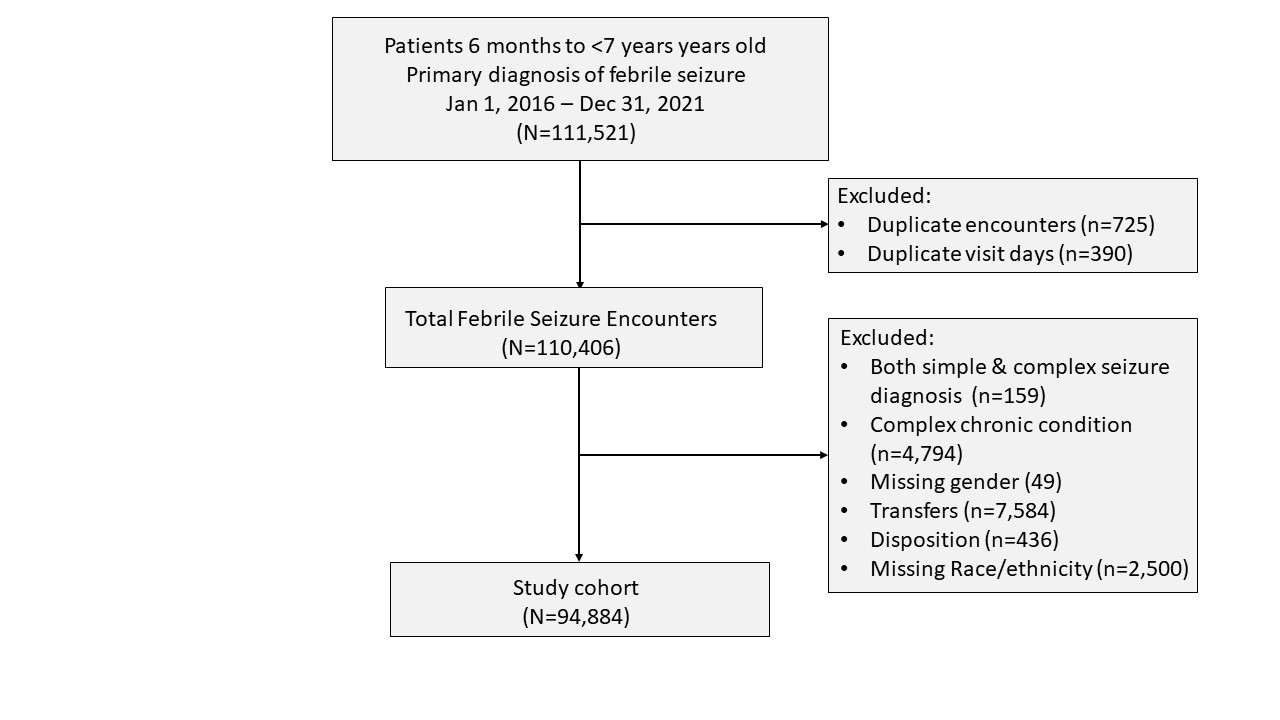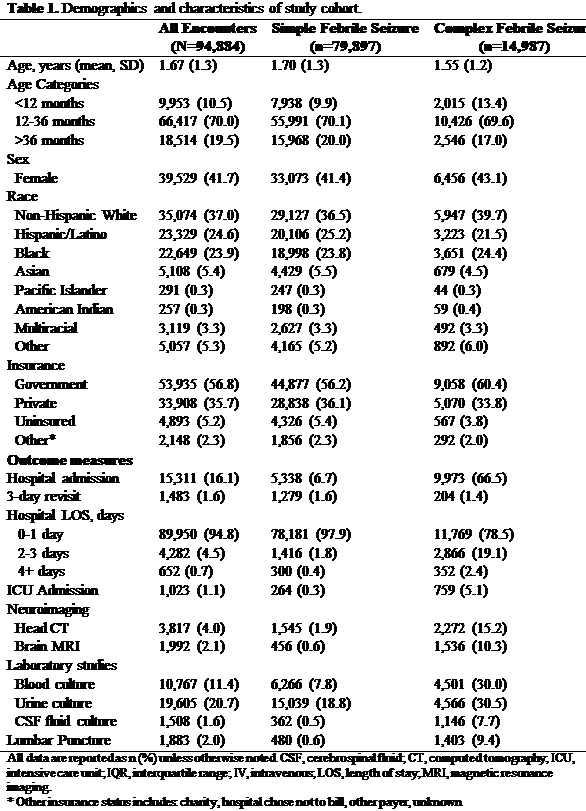Emergency Medicine
Session: Emergency Medicine 11: Potpourri
411 - Racial and Ethnic Differences in Evaluation of Febrile Seizures in the Emergency Department
Monday, May 6, 2024
9:30 AM - 11:30 AM ET
Poster Number: 411
Publication Number: 411.3309
Publication Number: 411.3309

Kelly R. Bergmann, DO, MS (he/him/his)
Pediatric Emergency Physician, Emergency Research Director
Children's Hospitals and Clinics of Minnesota
Minneapolis, Minnesota, United States
Presenting Author(s)
Background: Although febrile seizures are common, it is unknown whether resource utilization measures vary by race and ethnicity.
Objective: We aimed to examine differences in hospital admission and diagnostic evaluation for febrile seizure by race and ethnicity.
Design/Methods: We conducted a cross-sectional study among children 6 months to 6 years with simple or complex febrile seizure between January 1st, 2016 – December 31st, 2021, utilizing data from the Pediatric Health Information System. The primary outcome was hospital admission. Secondary outcomes included the proportion of encounters with neuroimaging or lumbar puncture. We used mixed-effects logistic regression model with random intercept for hospital and patient to estimate the association between outcomes and 1) racial group and 2) seizure type after adjusting for covariates.
Results: In total, 94,884 encounters were included (Figure 1). Most encounters occurred among children aged 12-36 months (70.0%) and of male sex (58.3%) (Table 1). Black and Hispanic/Latino children had 29% (aOR 0.71; 95% CI: 0.66, 0.75) and 26% (aOR 0.74; 95% CI: 0.69, 0.80) lower odds of hospital admission compared to non-Hispanic White children, respectively (Table 2). Black and Hispanic/Latino children had 21% (aOR 0.79; 95% CI: 0.73, 0.86) and 26% (aOR 0.78; 95% CI: 0.71, 0.85) lower adjusted odds of neuroimaging compared to non-Hispanic White children. For complex febrile seizure, the adjusted odds of lumbar puncture was significantly higher among Asian children (aOR 2.12; 95% CI: 1.19, 3.77) compared to non-Hispanic White children. There were no racial differences in the odds of lumbar puncture for simple febrile seizure.
Conclusion(s): Compared to non-Hispanic White children, Black and Hispanic/Latino children with febrile seizure are less likely to be hospitalized or receive neuroimaging.



